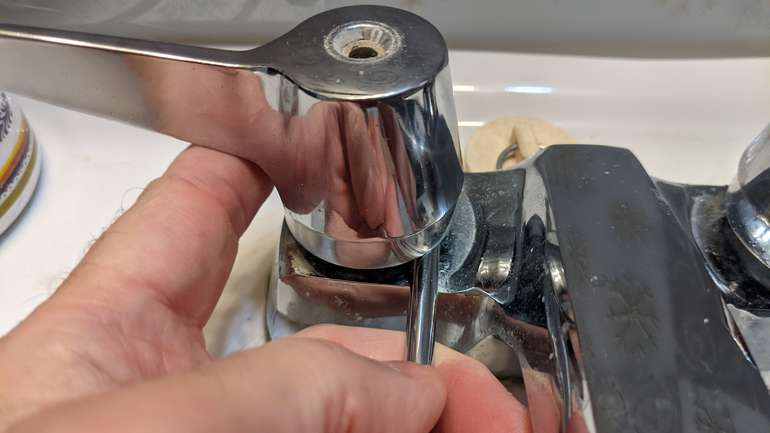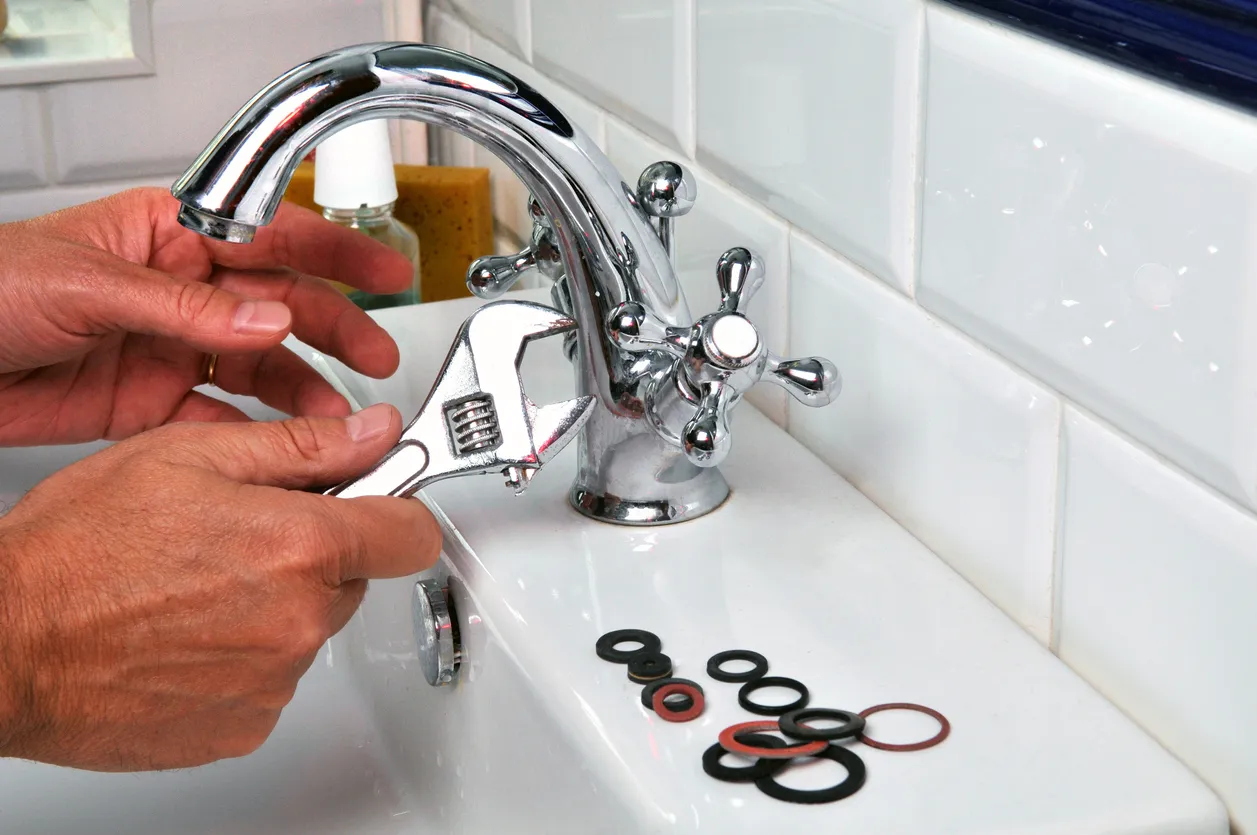Were you searching for advise involving What Causes Leaky Faucets & How To Fix Them?

Leaking faucets may seem like a minor inconvenience, yet their influence exceeds simply the nuisance of the noise. From drainage to sustaining unnecessary monetary expenses and health threats, disregarding a leaking tap can cause numerous repercussions. In this post, we'll explore why it's crucial to address this common house concern without delay and efficiently.
Wastefulness of Water
Ecological Influence
Leaking faucets contribute considerably to water wastage. According to the Environmental Protection Agency (EPA), a solitary tap trickling at one drip per secondly can squander more than 3,000 gallons of water per year. This not just stress water resources but additionally impacts communities and wildlife depending on them.
Financial Expenses
Raised Water Bills
Past the environmental effect, dripping taps can pump up water expenses substantially. The gathered wastage gradually translates into greater energy expenses, which could have been stayed clear of with prompt repair work.
Potential Building Damage
Additionally, prolonged trickling can lead to damage to components and surface areas bordering the faucet. Water buildup can cause discoloration, deterioration, and even structural problems if left unattended, causing additional repair service prices.
Health Concerns
Mold And Mildew and Mildew Growth
The consistent presence of dampness from a dripping tap develops an ideal atmosphere for mold and mildew and mildew development. These fungis not just endanger indoor air quality however likewise pose wellness threats, especially for people with respiratory system problems or allergic reactions.
Waterborne Illness
Stationary water in dripping faucets can come to be a breeding place for bacteria and various other virus, enhancing the threat of waterborne diseases. Pollutants such as Legionella germs prosper in stationary water, possibly bring about serious ailments when consumed or inhaled.
Do it yourself vs. Expert Fixing
Advantages and disadvantages of Do It Yourself Repair Work
While some may attempt to fix a dripping tap themselves, do it yourself fixings feature their very own collection of obstacles. Without appropriate expertise and tools, DIY attempts can intensify the concern or result in insufficient repair work, extending the trouble.
Advantages of Employing an Expert Plumber
Working with a specialist plumber guarantees that the underlying source of the trickling tap is addressed effectively. Plumbers possess the expertise and tools to identify and repair tap problems efficiently, conserving time and decreasing the threat of further damages.
Step-by-Step Overview to Taking Care Of a Dripping Faucet
Devices Needed
Prior to trying to take care of a trickling tap, collect the necessary devices, including a flexible wrench, screwdrivers, replacement components (such as washing machines or cartridges), and plumber's tape.
Typical Tap Issues and Their Solutions
Determine the sort of faucet and the details problem triggering the drip. Common problems consist of damaged washers, corroded shutoff seats, or faulty O-rings. Describe manufacturer guidelines or on-line tutorials for step-by-step guidance on repair services.
Preventive Measures
Regular Maintenance Tips
To stop leaking taps, perform regular maintenance such as cleaning aerators, evaluating for leaks, and changing damaged parts immediately. Furthermore, take into consideration setting up water-saving tools or updating to more efficient components.
Relevance of Prompt Services
Attending to dripping faucets as quickly as they're noticed prevents additional water wastage and potential damage, eventually saving both water and money in the future.
Influence On Property Value
Understanding of Well-Maintained Home
Keeping a building in good condition, including dealing with maintenance concerns like trickling taps, improves its regarded worth and charm amongst prospective purchasers or lessees.
Impact on Resale Worth
Features with well-maintained plumbing fixtures, including faucets, command higher resale worths in the realty market. Attending to leaking taps can add to a favorable impact throughout property inspections and negotiations.
Ecological Duty
Private Contribution to Conservation
Taking obligation for repairing trickling taps straightens with wider efforts towards water conservation and environmental sustainability. Every person's actions jointly make a considerable effect on maintaining precious resources.
Lasting Living Practices
By focusing on timely repair work and adopting water-saving behaviors, individuals add to lasting living techniques that profit both existing and future generations.
Conclusion
Resolving a leaking faucet surpasses simple convenience; it's a necessary action towards saving water, lowering monetary prices, and guarding health and wellness and residential property. Whether with do it yourself repair services or professional aid, acting to deal with trickling faucets is a little yet impactful means to promote liable stewardship of sources and add to a healthier, extra lasting future.
Why Are My Faucets Dripping (And Can I Fix it Myself)?
Causes of a Dripping or Leaking Faucet
Whether you’re hearing drops of water falling and hitting a sink, or noticing water ooze out from the base of the spout, you shouldn’t ignore a dripping or leaking faucet. And, the good news is, sometimes you can fix the problem yourself.
In this article, we’ll review a few common causes of dripping and leaky. We’ll also walk you through some basic ways to find the problem and handle it without calling anyone — and let you know when to call in a pro.
But, no matter what the cause, or whether you can handle it on your own, the sooner you address it, the better.
Each drip may be a tiny amount of water. But, they all add up quickly. According to the U.S. Geological Survey, one faucet losing one drop every 20 seconds — five a minute — wastes around a liter of water every day, and 173 gallons a year.
Add in more than one in your house, and it’s a lot of water to waste. So, we’ll help you get to the bottom of things quickly.
Four Reasons Your Faucet May Be Dripping
Aerator is Damaged or Unseated Valve Seat is Corroded O Ring is Loose or Worn Out Part of the Assembly is Loose Aerator is Damaged or Unseated
If you unscrew the end of your faucet, you’ll find the aerator. It’s the little stem piece with a screen on it that shuts off the water circulation.
If it’s damaged, or if it’s not sitting right, it will allow water to pass through.
Valve Seat is Corroded
Next is the valve seat, which is connected to the washer. If the washer wasn’t in place correctly, then it could have ground against the seat. Over time, this damages the valve seat.
The problem could also be corrosion: Over time, the part has worn out, and it’s now allowing water to pass through.
O Ring is Loose or Worn Out
Since the o ring is only a small rubber gasket, it’s a common reason why the faucet is dripping. You’ll find it at the base of the faucet, and it’s there to keep water from coming out where it’s not supposed to.
However, it’s common for the o ring to wear out over time. When it does, you’ll notice a drip.
Part of the Assembly is Loose
So far, we’ve looked at a few small, specific parts. But, the problem could be anywhere in the assembly if something’s out of place.
Even if a part isn’t damaged, over time, it may have become loose or dislodged. It could be the parts we mentioned, or the aerator at the tip of the faucet, the stem itself,
Can I Fix a Leaky Faucet Myself?
Depending on the problem, and how handy you are, there’s a chance you can fix a leaky faucet without calling a professional. But, you do run the risk of making the problem worse.
If it’s a small drip, you can certainly try a few troubleshooting tactics. We’ll walk you through them in a moment.
But, no matter what, your first step should be shutting off the water coming into the faucet. You should find a shutoff valve under the sink on the pipes leading to it. Turn each one clockwise until they close tightly.
Next, make sure you have the right tools for whatever you’re attempting. It’s tempting to make do with what you have. But, you need the right ones for a reason: You’re often dealing with small parts that can break if you handle them carelessly.
If you’re feeling confident, here are some places to start.
Items Near the Tip of the Faucet
A few of the parts we mentioned — particularly the valve seat and washer — are located at the tip of the faucet where the water comes out. They’re easy to access, making it a good place to start.
Check the O Ring
To check the o ring, you’ll need to take off the spout at the base. It’s easiest on kitchen sinks with long spouts, versus the smaller, bulkier base on most bathroom sinks.
Either way, this can be tricky, so do it carefully and don’t force anything. If it’s not coming right off, you’re much better off calling in a pro than possibly breaking something.
For a kitchen sink, there’s usually a nut or coupling assembly at the base of the spout. These often slide off easily without using any tools.
Once you’ve disassembled those parts, gently but forcefully twist off the spout.
Then, you can see the o rings. There should be two of the rubber gaskets on the base. If they look worn or damaged, replace them, and see if that solves the problem.

As a keen person who reads about Why Is It Important To Fix Your Leaking Tap/Faucet?, I was thinking sharing that article was smart. Be sure to take the opportunity to distribute this blog post if you enjoyed it. Thanks for taking the time to read it.